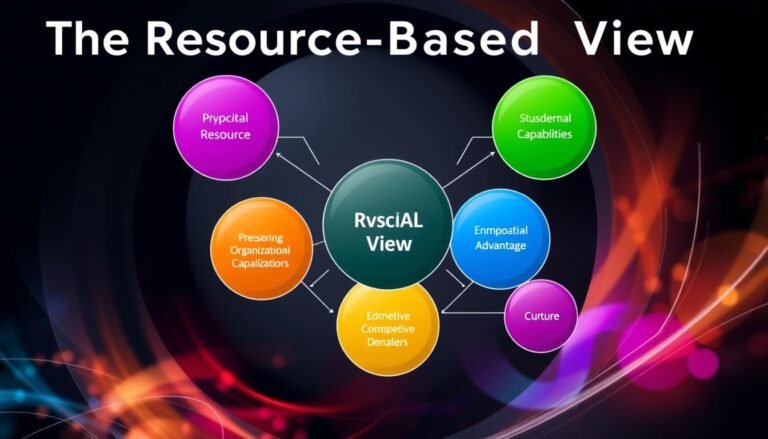Streamline Success with Business Process Reengineering
Have you ever wondered why some companies do better than others, even with the same resources? The secret often is in their Business Process Reengineering (BPR). By changing how they work, companies can improve and grow a lot. This is key in today’s world where being the best is everything.
BPR looks closely at how things are done to find what’s not working well. It aims to cut waste and make companies work better. This isn’t just about small tweaks; it’s about changing how things are done to grow and innovate. By learning about BPR, you’ll see how it can make your company better for everyone involved.
Key Takeaways
- Business Process Reengineering aims for big improvements in how things work.
- Its main goals are to make things more efficient, cut waste, and reduce mistakes.
- This approach makes companies more competitive, which pleases customers and adds value.
- For success, you need strong leadership, clear communication, and a clear plan.
- Companies really need BPR when facing big changes or lots of competition.
Understanding Business Process Reengineering (BPR)
Business Process Reengineering (BPR) is key for today’s businesses aiming for better efficiency and results. It’s a systematic way to deeply change business processes for big performance boosts. The goal is to make things more productive, cut down on wait times, and improve quality and customer happiness.
Definition of Business Process Reengineering
BPR means a big change in how things are done, aiming for big improvements, not just small tweaks. Companies look at their work to find what’s not working well. They then change their processes to meet today’s business needs. This approach started in the early 1990s, with companies like Ford Motor Company leading the way. By looking closely at their operations, businesses can spot problems like high staff turnover, inefficient processes, and outdated tech.
The Importance of BPR in Modern Business
BPR is very important in today’s fast-paced business world. With more competition and changing customer needs, using BPR strategies is key to staying ahead. It helps businesses change and grow by bringing in new ideas and making sure they do better than before.
At the heart of BPR is focusing on the customer and using new tech to offer better products and services. With tools like no-code and low-code tech, companies can automate processes quickly and save money. This shows how crucial BPR is for making businesses run smoother.
| Aspect | Description |
|---|---|
| Goal | Achieving dramatic improvements in performance and efficiency |
| Emergence | Developed in the early 1990s, pioneered by companies like Ford |
| Key Benefits | Increased efficiency, error elimination, improved customer satisfaction |
| Approach | Customer-centric focus using new technologies |
| Main Phases | Diagnosis, Analysis and Evaluation, Re-engineering, Evaluation |
Key Benefits of Implementing BPR
Business Process Reengineering (BPR) brings big wins for companies. It boosts productivity and cuts costs. Here are the main perks of BPR that make businesses stronger and more competitive.
Improved Effectiveness and Efficiency
BPR makes processes smoother for improved efficiency. It focuses on getting more done with less. This leads to happier customers and better business results.
Cost Reduction and Better Resource Allocation
BPR helps cut costs by simplifying workflows. This means less money spent on unnecessary steps. More money can then go to important projects, helping the business grow and stay focused.
Increased Competitiveness in the Market
BPR lets companies stay ahead by adapting fast to changes. Those who use BPR well can quickly meet customer needs. This approach keeps them competitive and ahead of rivals.
| Benefit | Description |
|---|---|
| Improved Effectiveness | Enhances productivity by refining processes and minimizing resource usage. |
| Cost Reduction | Eliminates unnecessary steps, lowering operational costs and reallocating resources. |
| Increased Competitiveness | Improves market responsiveness, keeping businesses ahead of competitors. |
| Customer Satisfaction | Addresses delays and inefficiencies, leading to better service and happier customers. |
| Operational Clarity | Promotes understanding of processes, aligning them with strategic goals. |
How to Execute a Successful BPR Initiative
Starting a successful BPR initiative means working together and aligning everyone in the company. It begins with a deep look at how things are done now. This helps find what’s not working well and where things can get better. By changing core business processes, companies can do more, better, and more effectively.
Steps to Initiate Business Process Reengineering
Starting with BPR means setting clear goals and knowing how things work now. This includes:
- Process Mapping: Make detailed maps of current workflows to spot problems and what’s repeated.
- Gap Analysis: Check where current processes don’t meet what we want them to do.
- Redesigning Processes: Create new ways of working that make things smoother and more productive.
- Implementation: Put the new processes into action, making sure everyone knows how and has what they need.
- Evaluation: See how well the changes work and get feedback from employees and customers to keep improving.
Importance of Leadership and Change Management
Leadership is key to a BPR success. Strong support from leaders helps make the program clear and important to everyone. Sharing the vision, goals, and benefits helps everyone understand and work together.
Change management is also vital. It looks at how people will adjust to new ways of doing things. By tackling resistance, companies build a culture that welcomes change and learning. This is crucial for making BPR work.
| Phase | Description |
|---|---|
| Analysis | Identify existing process inefficiencies and gaps. |
| Design | Develop improved workflows that streamline operations. |
| Implementation | Execute new processes and provide training for all stakeholders. |
| Evaluation | Measure success and gather feedback for ongoing enhancements. |
Business Process Reengineering vs. Business Process Management
It’s key to know the difference between Business Process Reengineering (BPR) and Business Process Management (BPM) for better work flow. Both aim to make business processes better, but they do it in different ways. BPR is about starting over from scratch, often needed when big changes are necessary. BPM, on the other hand, improves processes bit by bit, by watching and making small changes.
This shows us that BPR and BPM are not the same thing. They are different strategies for handling different business problems.
Comparative Overview of BPR and BPM
BPR is great when a company is stuck or needs a big change to stay competitive. It brings more flexibility, lowers risks, and makes workers happier. But, it can be hard to put into action and requires big changes in the company.
BPM is good for making small, steady changes in how things work. It’s for companies that like to improve step by step. BPM helps solve problems and makes things work better, but it can get expensive if not watched closely.
When to Choose BPR Over BPM
Deciding between BPR and BPM depends on what a company needs. BPR is best for companies growing fast, after merging, or facing big work issues. BPM is better for companies wanting steady, small changes over time.
Knowing when to use BPR or BPM helps companies pick the right strategy for their goals. This ensures they use the best approach for their situation.
Source Links
- Business Process Reengineering: Strategies for Success
- Business Process Reengineering: The Modern Way to Boost Efficiency and Profits
- How To Boost Efficiency With Business Process Reengineering
- What is business process reengineering | IBM
- Business Process Reengineering (BPR): The Detailed Guide 2023
- BPR strategy for successful business growth | Infosys BPM
- Importance of Business Process Reengineering: Top 5 Benefits
- Business Process Reengineering (BPR)? Best Practices | Cflow
- Business Process Reengineering (BPR) Examples | IBM
- BPR vs BPM – What is the Difference? – Techcanvass
- Business Process Improvement vs Business Process Reengineering
- BPR vs BPI







